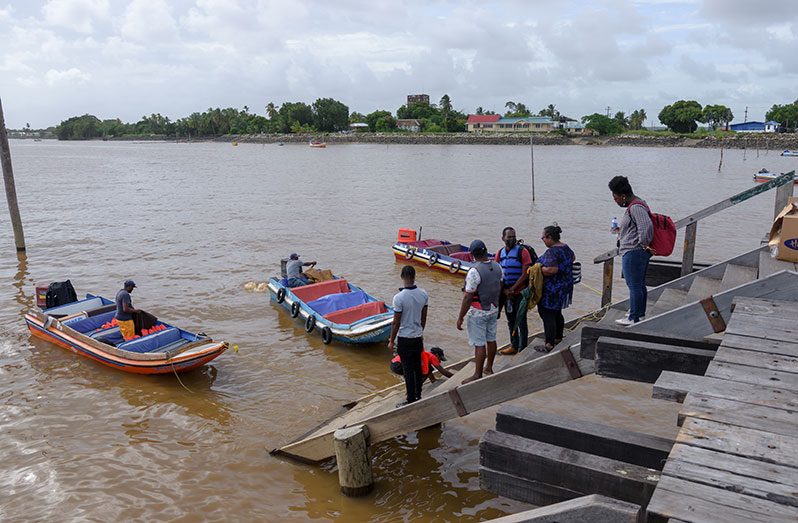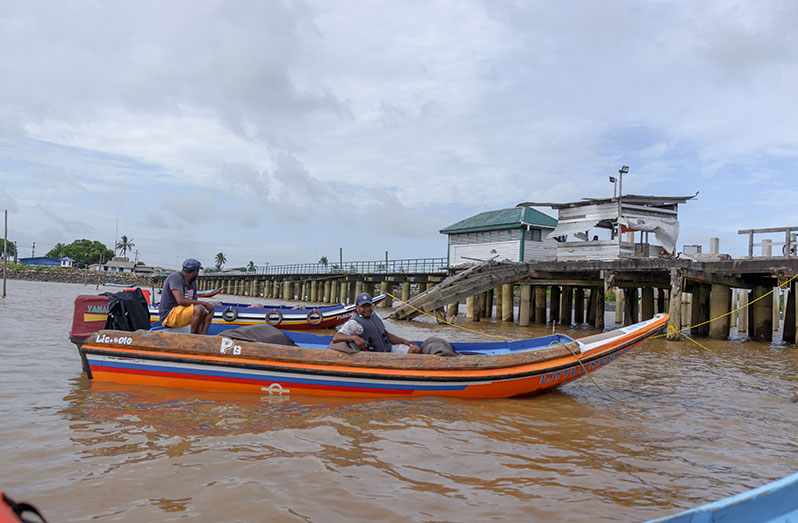A clean, breezy place
This week the Pepperpot Magazine visited the beautiful Leguan Island, Essequibo River, in Region Three (West Demerara-Essequibo Islands) to highlight the way of life of the people.
This journey started early for the team, crossing the Demerara Harbour Bridge (DHB) overland then travelling to Parika, East Bank Essequibo.
The team then boarded a speedboat which took about 20 minutes from Parika to Leguan Island, Essequibo River. It is one of 365 islands in the Essequibo River, where an incomplete but upgraded stelling was used to moor the boat.
It was about a 10-minute walk to the Regional Democratic Council (RDC) building from the Leguan stelling. There, the RDC extended its hospitality in providing transportation with a driver, who guided the team around the island to several villages.
There are two options to get to Leguan Island. One option if by ferry, the Malali, which leaves at 10:00hrs for Leguan from the Parika stelling. It is a long sail, depending on the tide and it leaves the island at 15:00hrs to return to Parika.
The other option is the speedboat service in which many of the boats outfitted with outboard engines do not have a shed, so you are likely to get wet if the tide is high.
Leguan Island is a developing place with 35 small villages, and it is a relatively large island where they have many facilities and hardly ever need to travel to Parika except to do business, since there are no commercial banks there nor large-scale shopping.
Leguan Island has two health centres, a cottage hospital with a resident doctor, two well stations, a Guyana Power and Light plant and office for paying bills, a post office, a police station, a rehabilitated guesthouse, the Regional Democratic Council (RDC) building, the Neighbourhood Democratic Council (NDC) building, the Leguan Secondary School, the Richmond Hill Primary School, a cremation site, a Community Library, three ballfields/playgrounds, five mandirs, seven churches and three mosques.
On the island, at one of the mandirs, there is perhaps one of the largest Hanoman statues in the country, which is made out of pure concrete and stands at 45 feet tall in the compound of the mandir, which is colourful and well-kept.
This statue was the brainchild of a resident who is a member of the mandir.
Leguan Island has long stretches of beach and upgraded sea defence, where there are wooden benches for adequate seating accommodation and serves as a relaxation area for both locals and visitors.
This section of the island overlooks the mighty Essequibo River, and it is a good spot to watch the sunset or the waves overlap.
The time to get around the island varies, depending on the stops made by a private vehicle. Some residents also use public transportation, which are mini-buses and cars.
Almost all the men have motorcycles, the most viable way to get around, and a lot of the villagers have their own vehicles.
The population of Leguan Island is about 3,000, and at one time, it was said that the island had 10,000. But over time, a lot of people, mostly young people, left in search of jobs.
Leguan Island has 25 internal streets, all of which have been upgraded to all-weather roads and one main road which goes all around the island.
On the island, they have a potable water supply, electricity, internet service provided by a resident at $5,000 per month, but no landline service.
There are many shops, bars, supermarkets, and corner snackettes and barbershops near the stelling area and all around the island.
The people are very hospitable and the population consists of a mixture of Afro and Indo Guyanese, a handful of Spanish-speaking people and people of mixed-race ethnicities.
It is a very safe place to reside, where people leave their doors unlocked and all is intact at all times, since crime is basically unheard of there.
Leguan Island is a clean place with never-ending farmlands and is an island where the people are self-sufficient.
The main economic activities of the people are rice-farming, cash-crops cultivation, cattle and poultry farming.
The locals grow their own food, and there is an abundance of fruits and vegetables. Most people rear cows, sheep, goats, ducks and chickens.
One can get almost everything on the island, and most farmers would go to Parika to sell their produce.
Leguan Island is a quiet, breezy place for a good, family-oriented life.



.jpg)

























